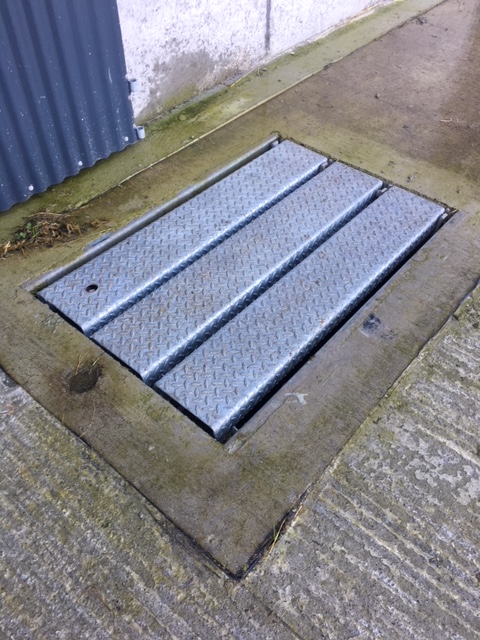15 January 2022
Working Safely with Slurry

With slurry season commencing in many parts of the country this week it is once again important to think about the dangers associated with handling slurry and to plan this work with safety in mind. John McNamara and Francis Bligh Teagasc Health and Safety Specialists advice caution with safety tips
Slurry Drowning
When we think about slurry we usually think about gas but it important to remember drowning is also a frequent occurrence with slurry. Working around an agitator or slurry tanker is demanding and it is possible to lose concentration and ‘step-back’ into a slurry tank if precautions to prevent access to tanks are not in place.
Key safety tips
- Safety grids and barriers must be in place to prevent falling into slurry
- Maintain high vigilance when placing slurry agitators into position.
- Use access holes for slurry pipes
- Keep slurry tanks and pits securely covered or fenced.
See the H.S.A video Slurry Tank Near Drowning here
Slurry Gassing
Slurry produces a range of gases based on the nature of the fermentation which occurs.
Facts on slurry gas
- Poisoning occurs ‘above ground’ due to the release of Hydrogen Sulphide (H2S).
- H2S can be detected by smelling at 0.1 ppm
- At 150 ppm the olfactory nerve which detects smell in the nose is desensitised and then H2S cannot be detected by smell
- The gas produces adverse health effects at increasing concentration and is rapidly fatal above 700ppm.
- Teagasc measurements have indicated that fatal levels of gas can occur in the period after agitation commences
See the H.S.A video Dangers of Slurry Gas – Just One Breath Will Kill here
Key safety tips
- Always wait for a breezy day.
- Open all doors and vents
- Remove all animals from the shed
- Ensure persons particularly children or older persons do not enter during/after agitation
- At least two people should be present at all times.
- Make sure machinery is in good repair and guards are in place.
- Make sure tank access points are guarded.
- Stay away from the agitation point for at least the first 30 minutes after agitation commences
- Remember poisoning can occur either outdoors or indoors in calm conditions
BEWARE Slurry gas can travel into linked tanks or buildings that are connected by drainage pipes or channels. This means you or others in the yard may be unaware that milking parlours, store sheds or even workshops could have high concentrations of potentially fatal gas present.
Wind Speed
A wind speed of at least Beaufort Scale 2 where wind ‘is felt on exposed skin and leaves rustle’ and has a speed of 7 Km per hour or higher is required. This rapidly dissipates the poisonous gas.
Indoor agitation is highly dangerous
Consider
- Department of Agriculture TAMSII grant aid to extend tanks to allow outdoor agitation.
- Installing a slurry circulation pipe so that more areas of the tank can be agitated from outside agitation pipe.
- Installing a slurry aeration system
Watch the video below focusing on safe slurry agitation
Slurry gas meters
The H.S.A /Teagasc guidance does not recommend the use of gas detection systems by farmers. These meters typically are set to alarm at 10ppm which is the Occupational Exposure Limit Value (OELV) for a 15 minute exposure under the Code of Practice for the Safety, Health and Welfare (Chemical Agents) Regulations. This is considered to be the maximum exposure that will not cause a health issue.
Beware
- Fatality can occur in an instant – H2S emissions from slurry (over 1000ppm).
- Gas detection systems can only be used safely along with full breathing apparatus and should not be used as a substitute for the safety guidelines outlined in the H.S.A. Teagasc Slurry handling guidance.
Never enter a tank
Entering a slurry tank or any tank with organic material in it can be lethal and is not advised. Doing this work is covered by Confined Space entry regulations and a Code of Practice giving guidance on these regulations is available on the H.S.A. website
Remember
- Gas such as H2S, methane, carbon dioxide or ammonia may be present.
- These gasses also deplete oxygen levels which can cause asphyxiation and instant death
- Rescue is not possible. Multiple fatalities have occurred when this has been attempted.
- Always hire persons or firms with the requisite training and equipment if the need to enter a tank arises
Further Information on Slurry Safety
Further Information on safety with slurry is available from the H.S.A. website and Teagasc Farm Health & Safety
In particular, a video series on the dangers of slurry can be viewed on The H.S.A. and Teagasc YouTube channels. See
Slurry Gas – The Silent Killer on Irish Farms
